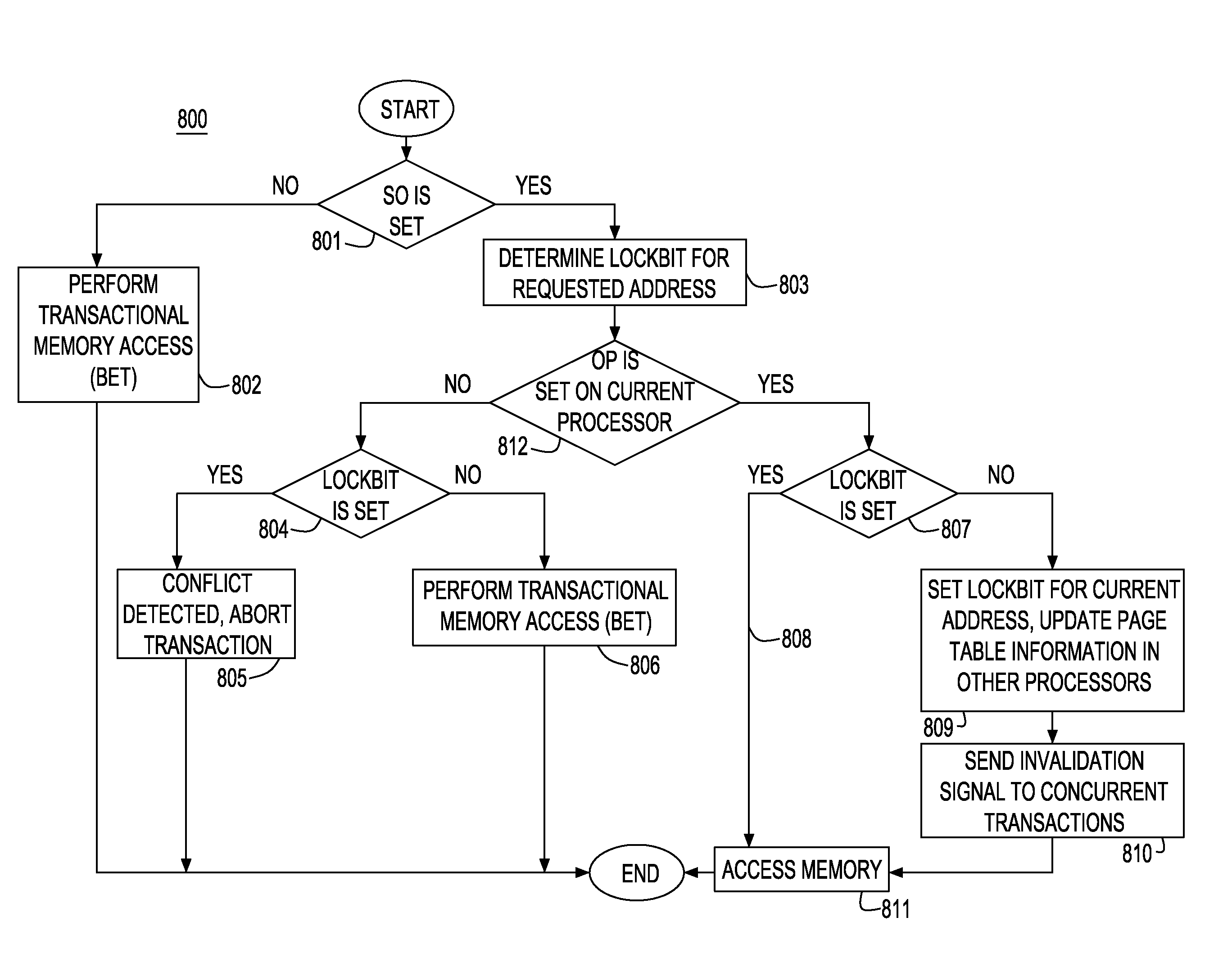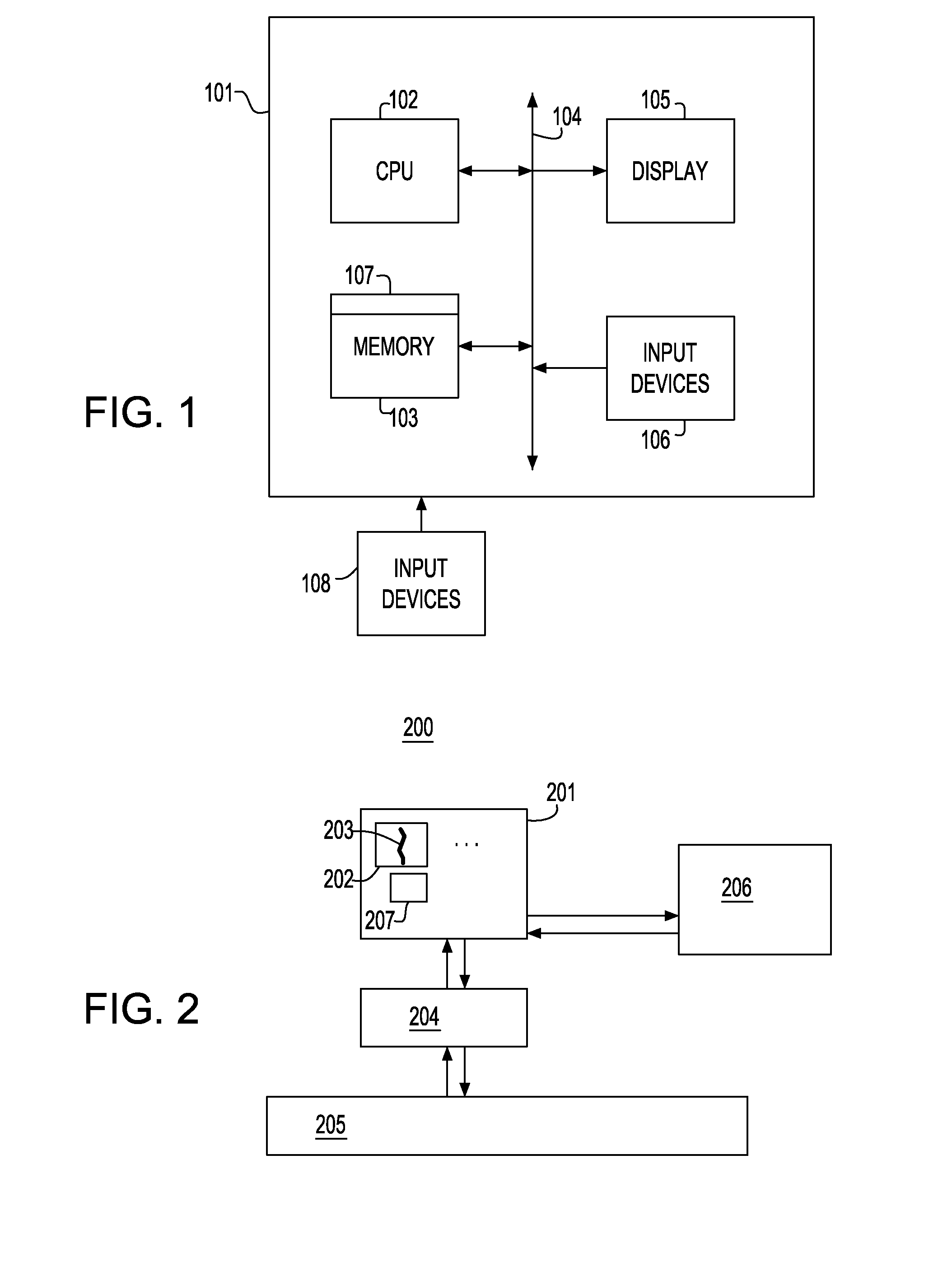System and method for handling overflow in hardware transactional memory with locks
a transactional memory and lock technology, applied in the field of computer systems, can solve the problems of difficult to buffer data for uncommitted transactions with reasonable cost and complexity, difficult to achieve reasonable implementation cost and complexity, and often require expensive hardware and software enhancements to support atomic transactions architecturally, etc., to facilitate the execution of non-revocable operations and improve the situation.
- Summary
- Abstract
- Description
- Claims
- Application Information
AI Technical Summary
Benefits of technology
Problems solved by technology
Method used
Image
Examples
Embodiment Construction
[0039]The present invention proposes a new mechanism to handle the case of transaction state overflow in best effort hardware-based transactional memory systems (BET). The invention utilizes the mechanisms for read-set, write-set tracking and buffering of the BET system in the case of non-overflowing transactions and uses a combination of said mechanisms with per memory reservation structures (lockbits, e.g., at a per page or line granularity) in the event of transaction overflow. Reservations (lockbits) are used to control concurrency and conflict detection between the overflowing and other non-overflowing transactions. The design permits at most one overflowing transaction.
[0040]The cost of overflow is largely paid by the transaction that overflows. Cost incurred for concurrent non-overflowing transactions are twofold: (i) check of lock bits at load, store access, (ii) polite conflict management (non-overflowing transactions steps back in favor of an overflowing transaction).
[0041...
PUM
 Login to View More
Login to View More Abstract
Description
Claims
Application Information
 Login to View More
Login to View More - R&D
- Intellectual Property
- Life Sciences
- Materials
- Tech Scout
- Unparalleled Data Quality
- Higher Quality Content
- 60% Fewer Hallucinations
Browse by: Latest US Patents, China's latest patents, Technical Efficacy Thesaurus, Application Domain, Technology Topic, Popular Technical Reports.
© 2025 PatSnap. All rights reserved.Legal|Privacy policy|Modern Slavery Act Transparency Statement|Sitemap|About US| Contact US: help@patsnap.com



